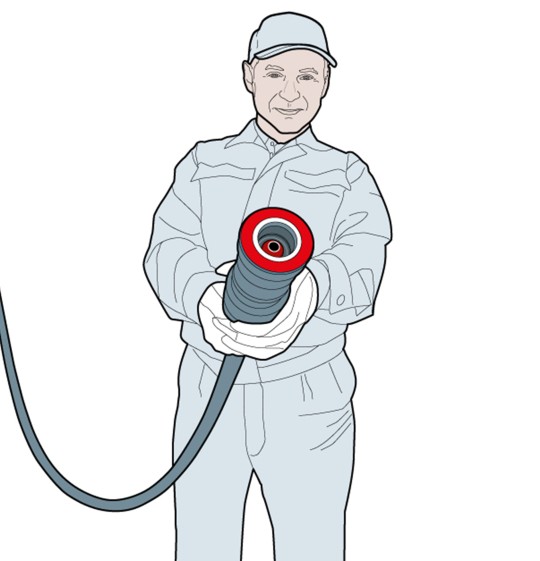The Joy of Driving Without Emissions
Hydrogen fuelling stations from Linde for zero-emission mobility.
A silver car slowly approaches, accelerates and drives away. It almost seems to be floating because there’s nothing to hear except a gentle humming. What sounds like a strange futuristic vision is already reality in many places. Car manufacturers around the world are working on alternative drive concepts. Alongside vehicles with electric motors, fuel cell vehicles are also beginning to conquer the roads. These vehicles run on hydrogen gas, which the fuel cell converts into electricity, to power an electric motor. Only water vapour comes out of the exhaust pipe. A prerequisite for more fuel cell vehicles on the road is the corresponding expansion of the refuelling infrastructure. This is why Linde AG are currently taking part in the Clean Energy Partnership (CEP) initiative with 19 other industrial partners. “First we want to install 50 hydrogen fuelling stations in the larger cities and along the main corridors,” explains Linde Senior Expert Hydrogen Solutions Michael Westermeier. “As soon as the primary refuelling infrastructure is in place, the next stage will be to expand into the surrounding areas,” he adds.

A MIGHTY MIDGET!
The hydrogen pumps are generally located in the front of a conventional fuelling station. This location is the problem: When you factor in the shop, car wash and vacuum cleaning facilities, there’s not much space for anything else. Westermeier and his team have developed a compact solution: a tank system with cryo pump. All that is needed is an area 2.5 by 6.4 metres (8 by 21 feet) to install the system consisting of an equipment container and a storage tank. “This makes ours the most compact system on the market. We achieved this by storing the hydrogen in liquid form because it has a much higher energy density than compressed hydrogen gas,” said Westermeier. The new generation of tanks have a storage capacity of 400 kilograms (882 pounds). When combined with a supply tank, between 130 and 140 vehicles can be refuelled. Moreover, the pump consumes only a fraction of the energy consumed by other compressors, thanks to direct compression.
UNDER PRESSURE
The tank system works by using a cryo pump, an electric motor, high-pressure storage banks and heat exchangers. The minus 253 degrees C liquid hydrogen flows out of the storage tank into the first pump chamber and is pumped into the second chamber by the upward movement of the piston. Here, the downward movement of the piston increases the final pressure to 900 bar. The hydrogen is now in gaseous form and flows into the storage banks. When the driver places the fuel nozzle onto the car‘s intake port and presses the start button, the system automatically checks to ensure the connection is leak-proof. Hydrogen then flows from the storage banks and the pump into the car. The gas from the cryo pump still has a temperature of about minus 220 degrees C, while the gas from the storage banks is at ambient temperature. Mixed together, they have the perfect fuelling temperature of minus 40 degrees C. This temperature is important since hydrogen heats up when filled into the vehicle’s tank. As soon as the tank is full or the driver presses the stop button, fuelling stops. This allows the fuel cell vehicle to be filled just as easily as a conventional car.
7 FACTS ABOUT HYDROGEN
| 100 hydrogen fuelling stations should be in operation in by 2018. | With a full tank, an H2 vehicle has a range of up to 700 kilometers (435 miles). |
| 314 cars with a fuel cell are currently on Germany's roads.* | 7-13 pounds is the capacity of a typical hydrogen vehicle tank. |
| 9,50€ is the cost of one kilogram (2.2 pounds) of hydrogen. | 3 mins is the time it takes to fill a H2-vehicle. |
| 500 Busses with a fuel cell should be rolling on Europe's roads by 2020. |
*Date January 2017
